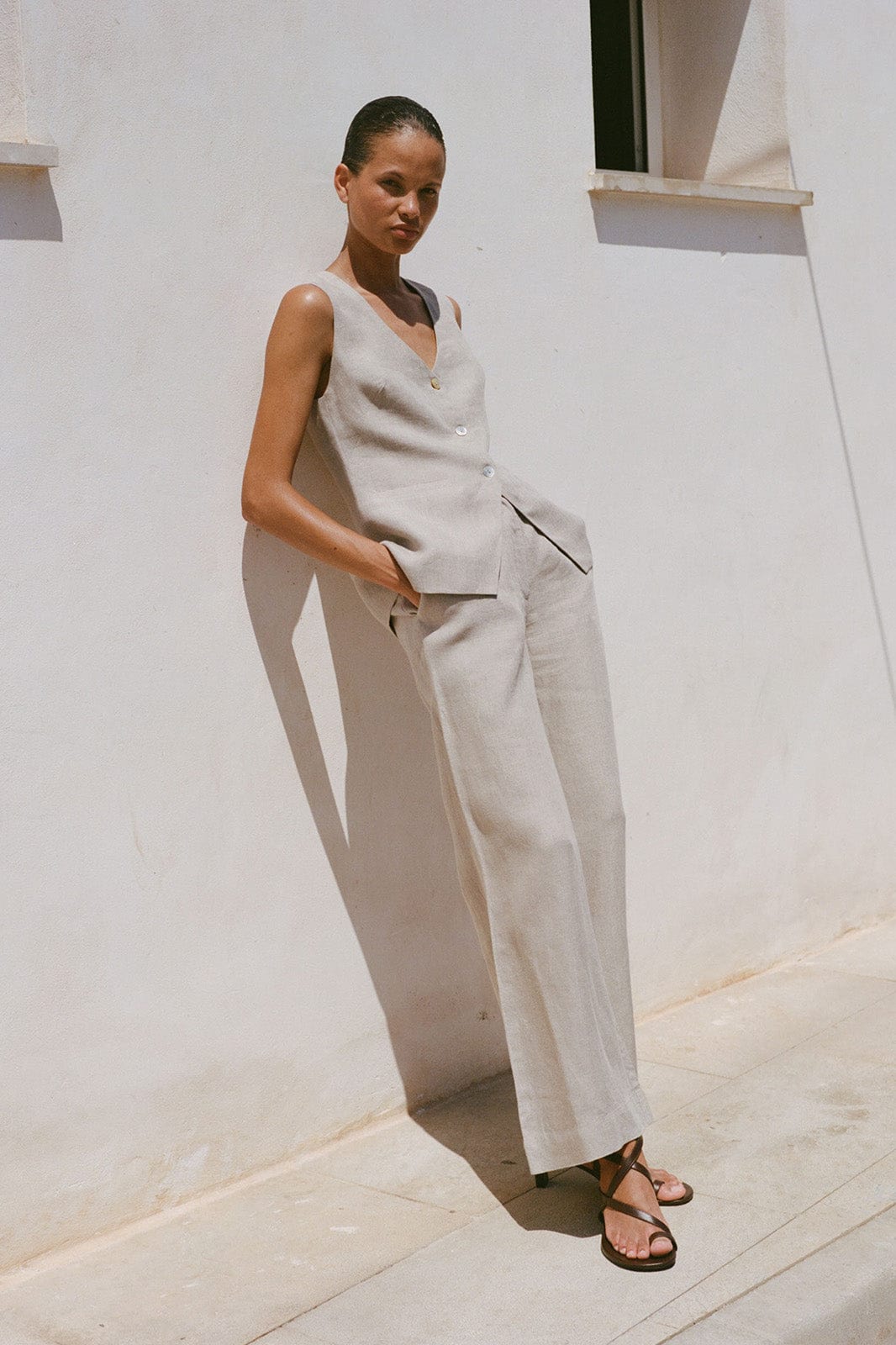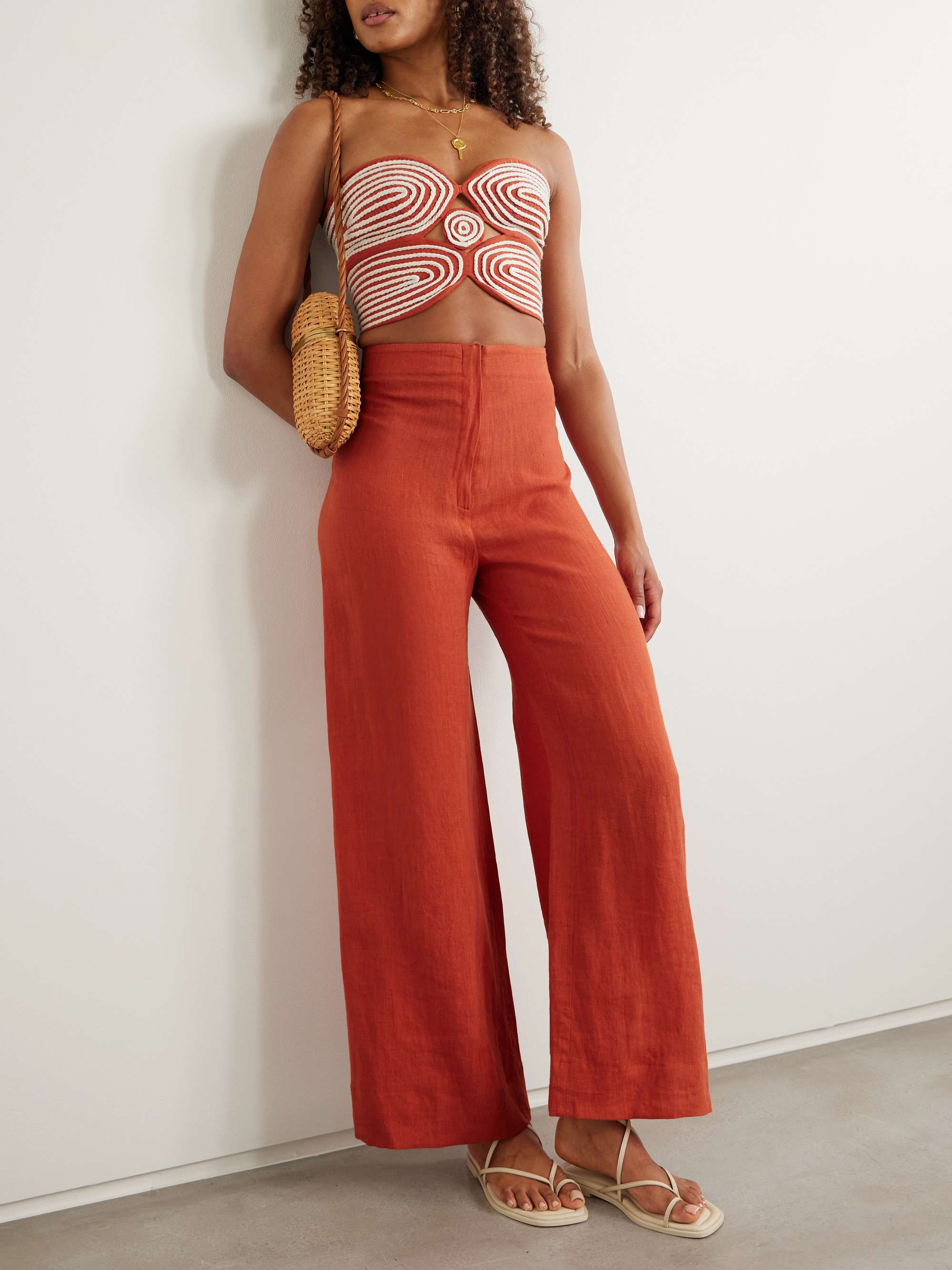These Are the Best Linen Trousers for Summer, According to Industry Insiders
A must-have summer staple


We’re finally experiencing a proper Great British summer—a real one, complete with picnics, sunshine, and even the occasional risk of sunburn. Hurrah! So, it’s time to start seriously rethinking our wardrobes. Consider your black wool trousers officially out of action until October, and even your favourite jeans can be packed away for now. Because this is the season of linen trousers.
Equal parts chic and uncomplicated, a classic pair of linen trousers offers the perfect base for just about any outfit. For work, pair them with an equally breezy shirt and mules—shrug a knit over your shoulders if you're lucky enough to have air con. For running errands, a simple T-shirt and flip flops will do the trick. Heading out in the evening? Style them with strappy sandals and a silk slip top. And if you're beach-bound, just your bikini underneath will do. See? They really do work for every occasion.

But, to let you in on a secret—I’ve never actually owned a pair of 100% linen trousers myself. Blame it on the unpredictable weather, my soft spot for jorts, or simply underestimating the power of natural fabrics when sweaty season hits. So this year, I’m investing, and I’ve asked every fashion editor, stylist, and brand founder I know which ones they genuinely recommend—tried and tested.
Not one to gatekeep, I’ve rounded up all of their picks below—from sleek navy styles to a Massimo Dutti pair one expert dubbed a “must-have.” Because, as we know, the secret to great shopping always starts with even better research.
Shop the best linen trousers
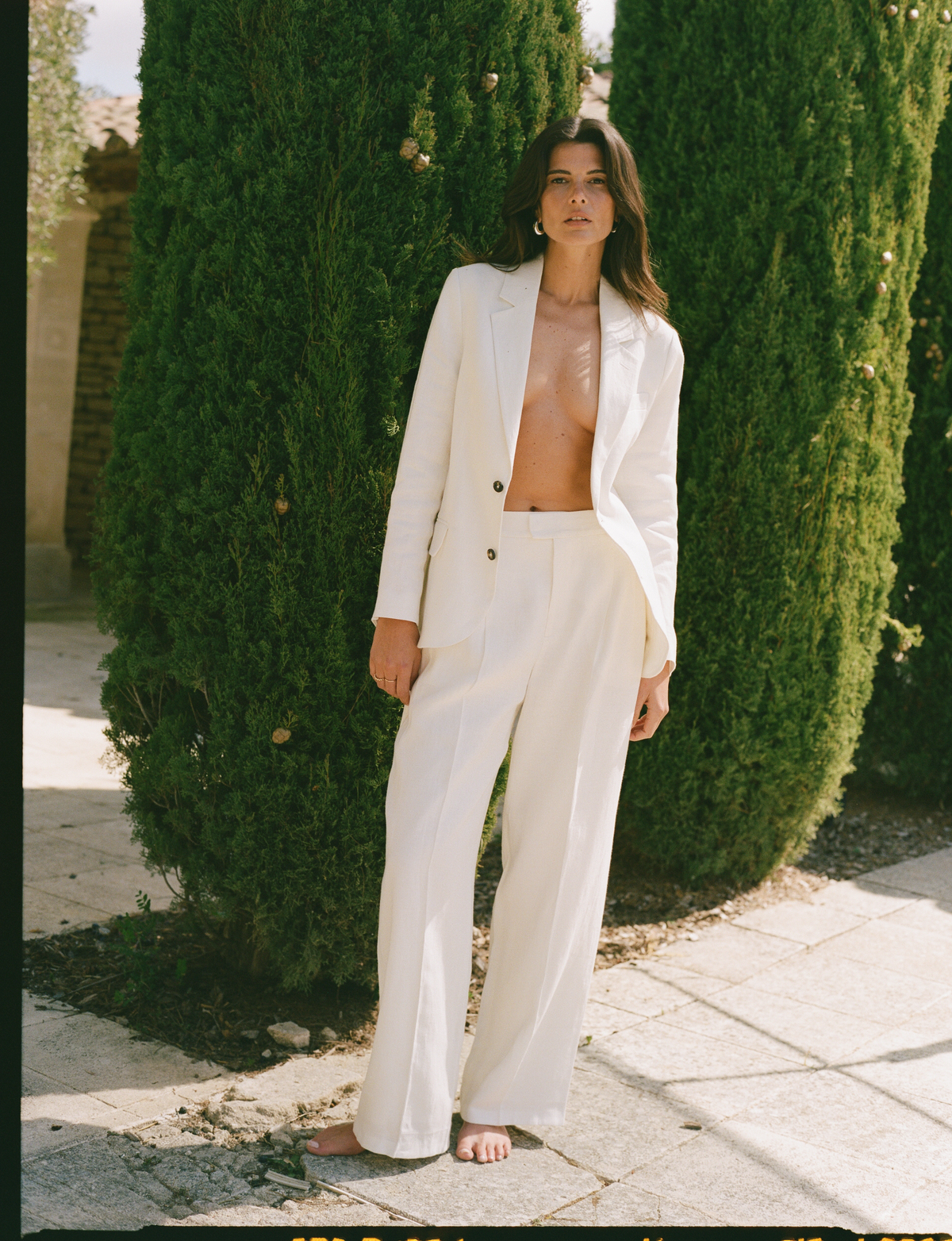
Three industry insiders—including Marie Claire's very own fashion editor, Clementina Jackson—all rave about the With Nothing Underneath Rampling Trouser. Crafted from 100% Irish linen, they’re midweight, durable, and cut for a more formal feel thanks to the tailored waistband and pleated front. Consider them your new workwear staple.
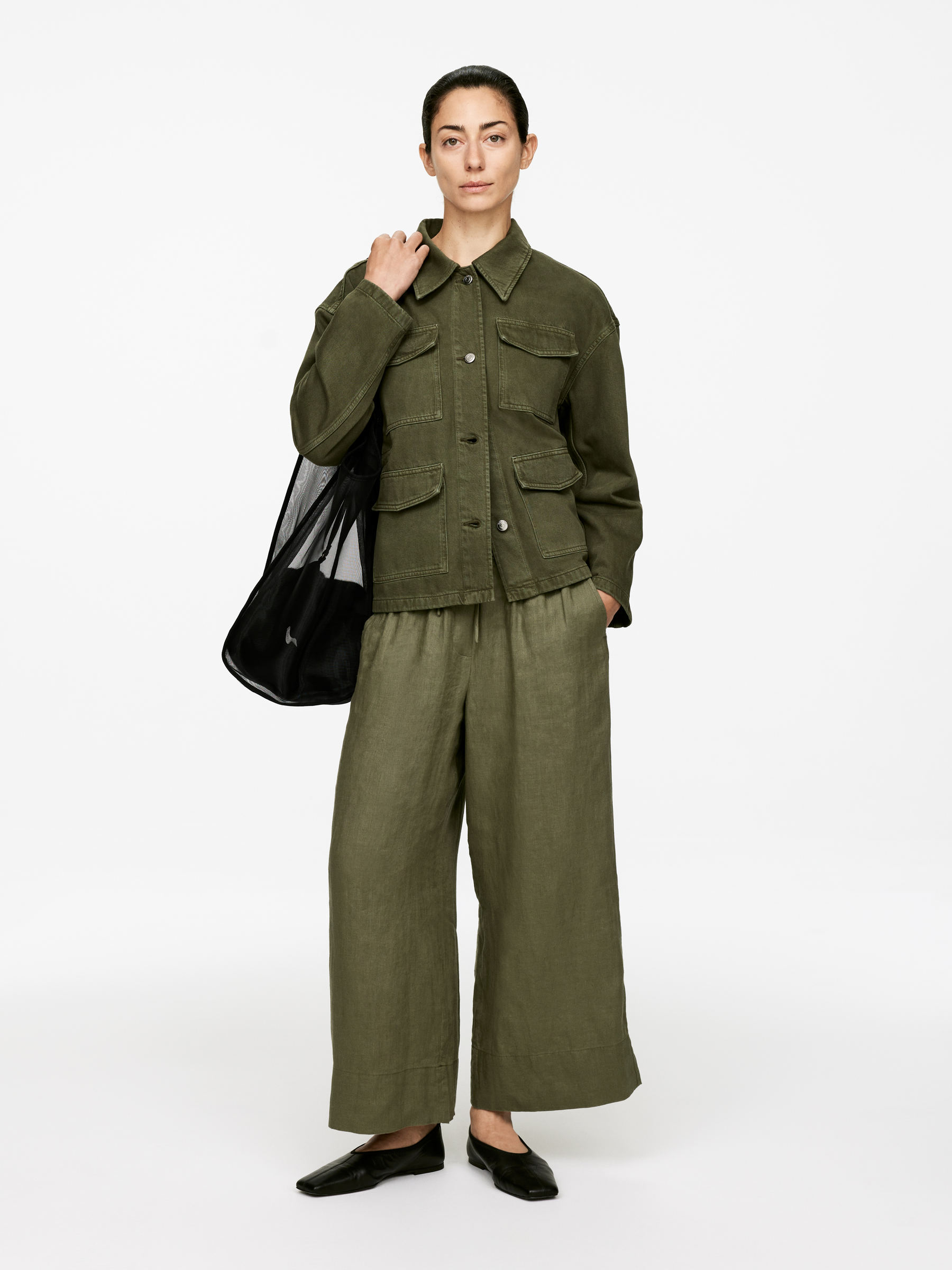
To break away from classic cream and black, consider a cool khaki. Whether styled with a white tank top, a brown shirt or even a black blazer, the deep green hue is surprisingly versatile. Plus, they’re crafted from 100% linen, offering all the breathable, lightweight benefits the fabric is loved for.
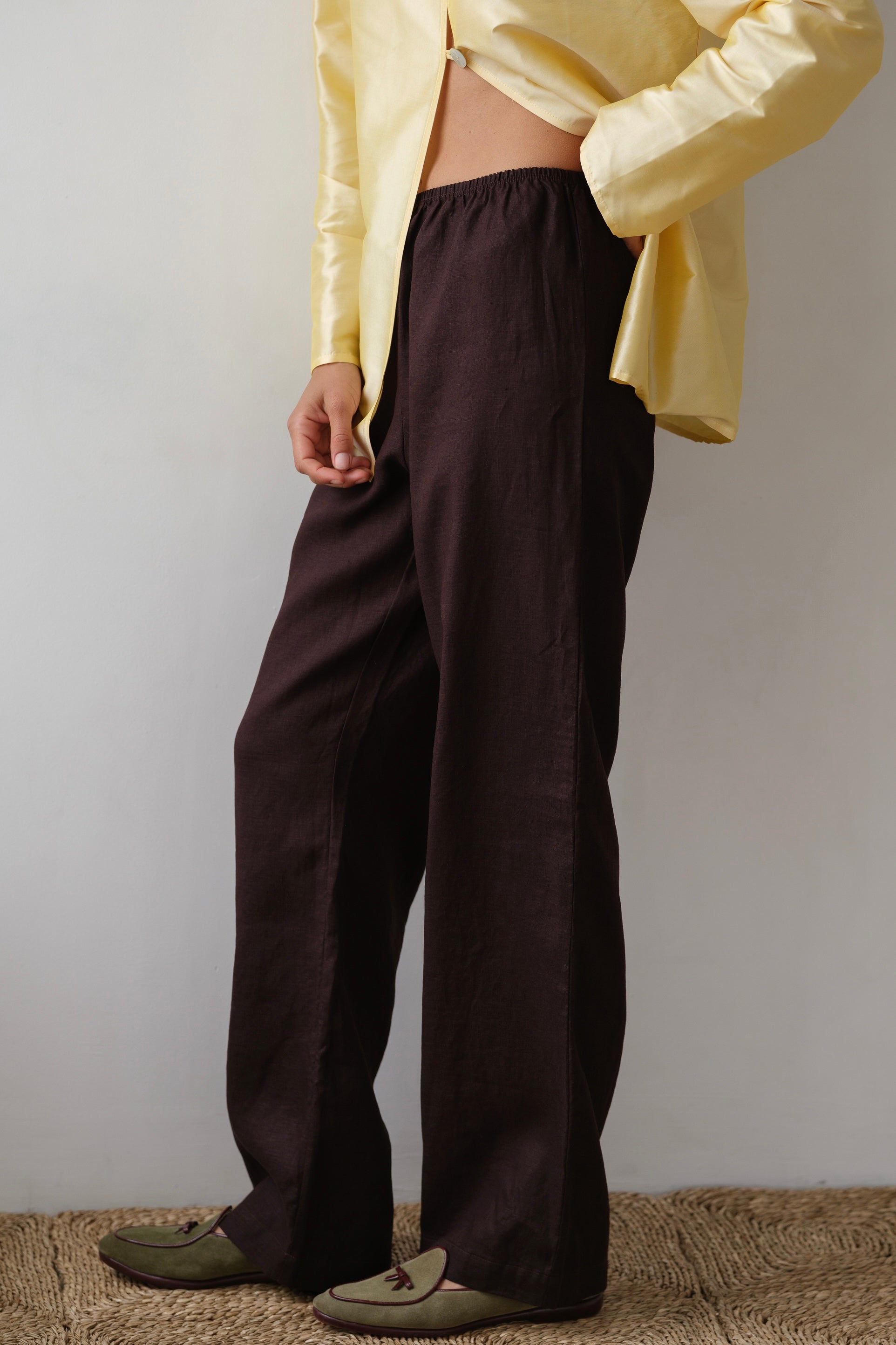
Donni’s linen trousers are made and shipped from Los Angeles, so they do come with added shipping costs—but according to one particularly chic stylist (and over 100 glowing reviews), they’re well worth the extra faff. The espresso shade feels especially sleek, though they’re also available in five other colours.
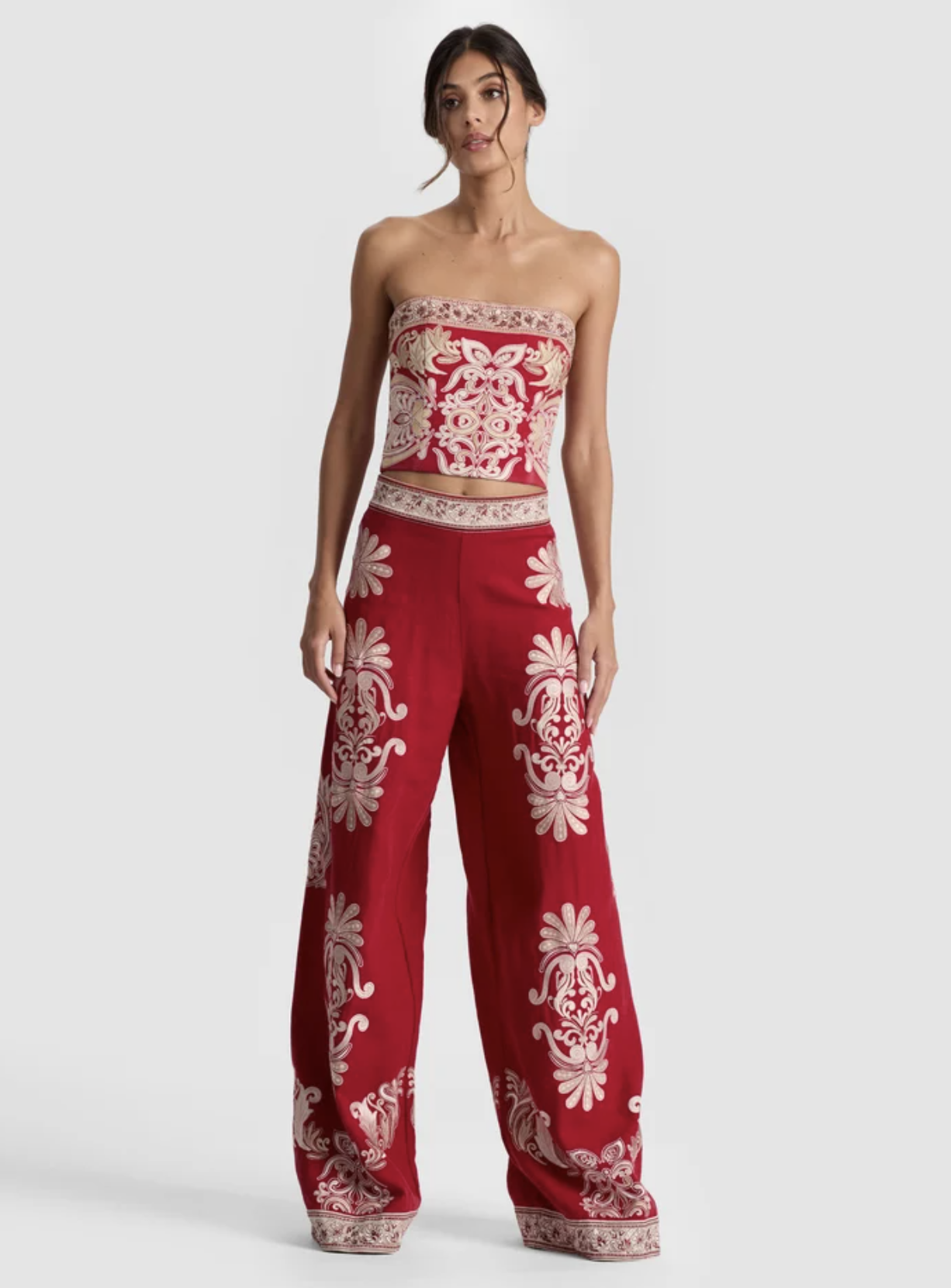
Linen trousers don’t have to stay within the neutral shade spectrum (though there’s certainly no shortage of chic cream and black options). Proving the fabric can be just as vibrant and playful as any other material, this 100% linen pair from Alice + Olivia is a particularly pretty option—and brings a more polished, formal feel to the summer staple.

Kindred of Ireland are true experts when it comes to linen, crafting everything from dresses and shirts to trousers from the breezy fabric. This particular pair, with a low waist and wide-leg silhouette, strikes the perfect balance between smart and casual thanks to its effortless boyfriend cut.
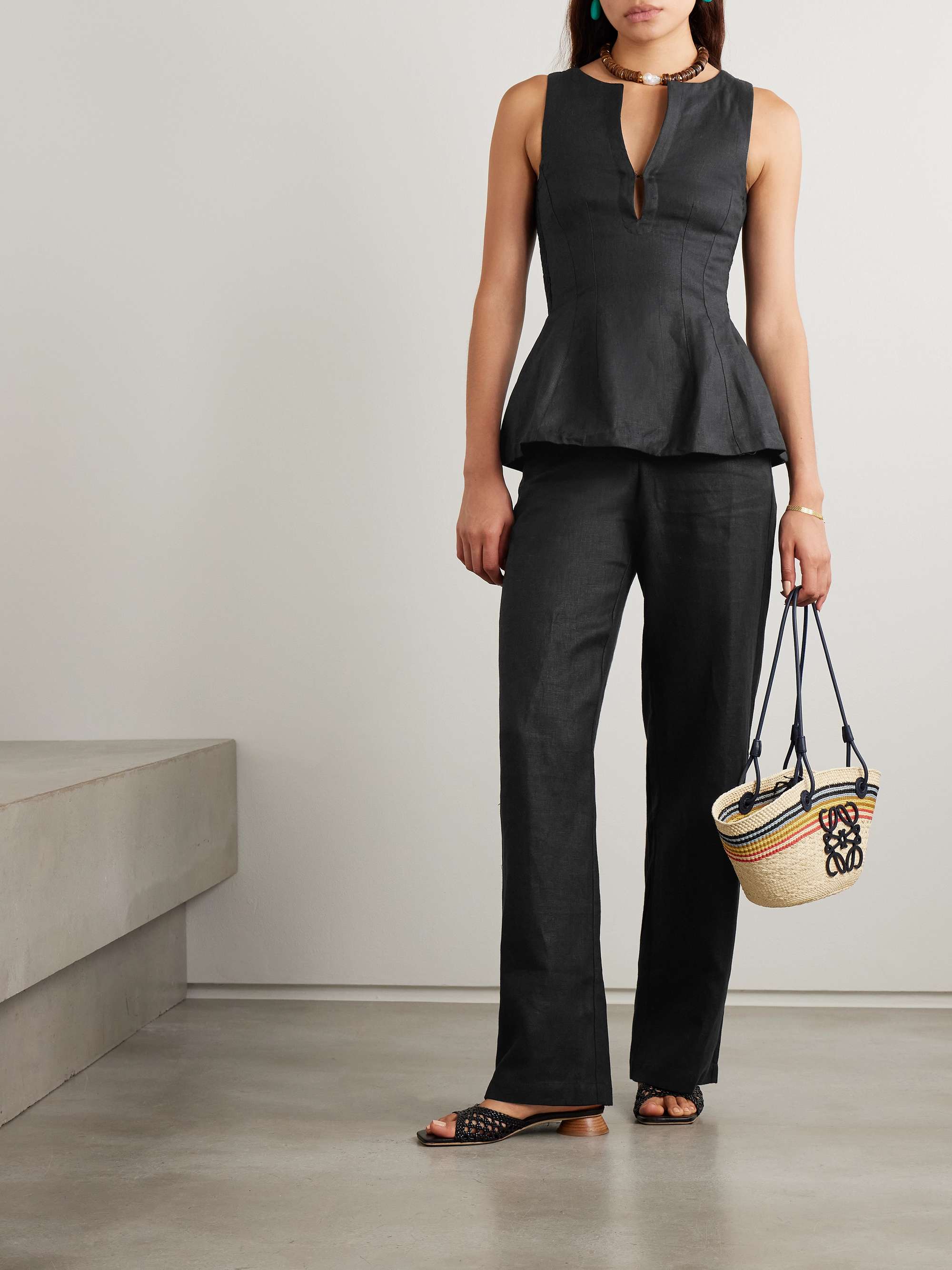
Falling under Net-a-Porter’s ‘Net Sustain’ category, Faithfull’s linen trousers are as planet-friendly as they are polished. Crafted from certified European linen, they feature a timeless straight-leg cut that transitions effortlessly from office days to everyday errands.

If you’ve already secured a classic, everyday pair of linen trousers, perhaps a bold patterned pick will catch your eye? This abstract floral design will liven up any look—whether you style it with a simple white shirt or go all-in with the matching waistcoat.
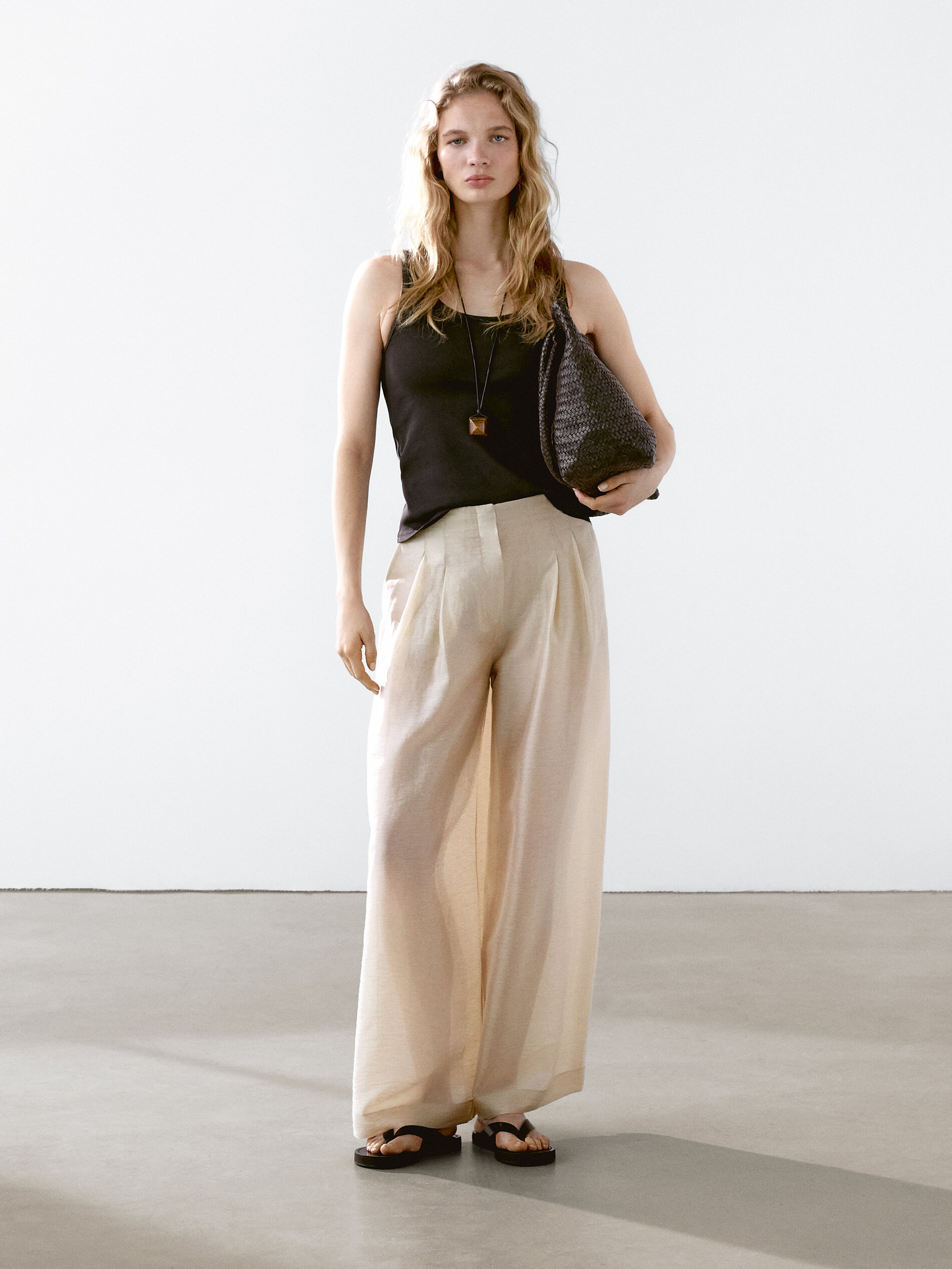
While linen is light and breezy, it does have a tendency to wrinkle. That’s why some people opt for a linen blend—retaining all the fabric’s best qualities while reducing the need for constant ironing. These linen-blend trousers from Massimo Dutti do exactly that. They’re also slightly sheer, nodding to one of the biggest trends from the Spring/Summer 2025 runways.

Navy linen trousers are trending right now, offering a polished alternative to cream and white shades without the starkness of black. This 100% linen wide-leg palazzo pair adds striking structure to any outfit—just keep your top chic and simple.
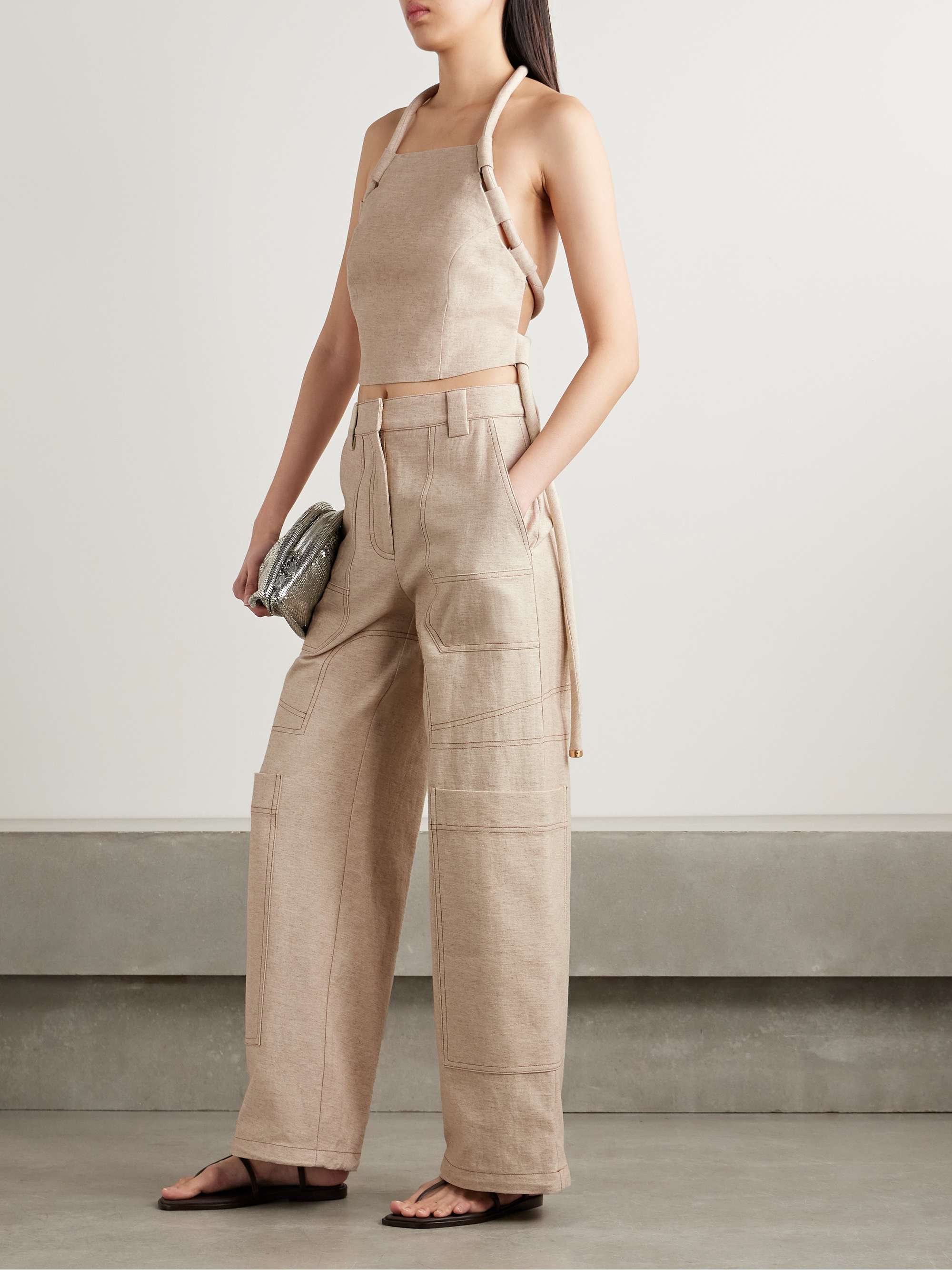
For a more casual take on the linen trouser trend, look to these Cult Gaia cargos. While they’re primarily crafted from cotton with a 15% linen blend, they still tick the all-natural box—just with a little added edge. Oversized pockets and contrast stitching give them a utility-inspired twist that will pair seamlessly with shirts and simple vest tops.
To understand a little bit more about all the benefits of buying linen, we turned to designer and linen expert Lea Wieser. Lea is the co-founder of the eco-conscious linen brand Arkitaip, which specialises in creating summer-ready staples you'll want to keep forever.
Founded in 2019, all of Arkitaip's pieces are made in Europe, using 100% Masters of Linen certified fabric. As Wieser explains, this means the brand's "linen is grown and woven in the EU, guaranteeing responsible production, and its supply chain is fully traceable."
Wieser also explained how you can ensure the linen you're buying is high-quality, and why the fabric makes a better summer choice than alternatives like cotton, for example.
Is linen better than cotton for hot weather?
"Yes, linen is highly durable, temperature-regulating, moisture-wicking, breathable and good for sensitive skin," Wieser explains. "Making it a great choice for a hot summer day."
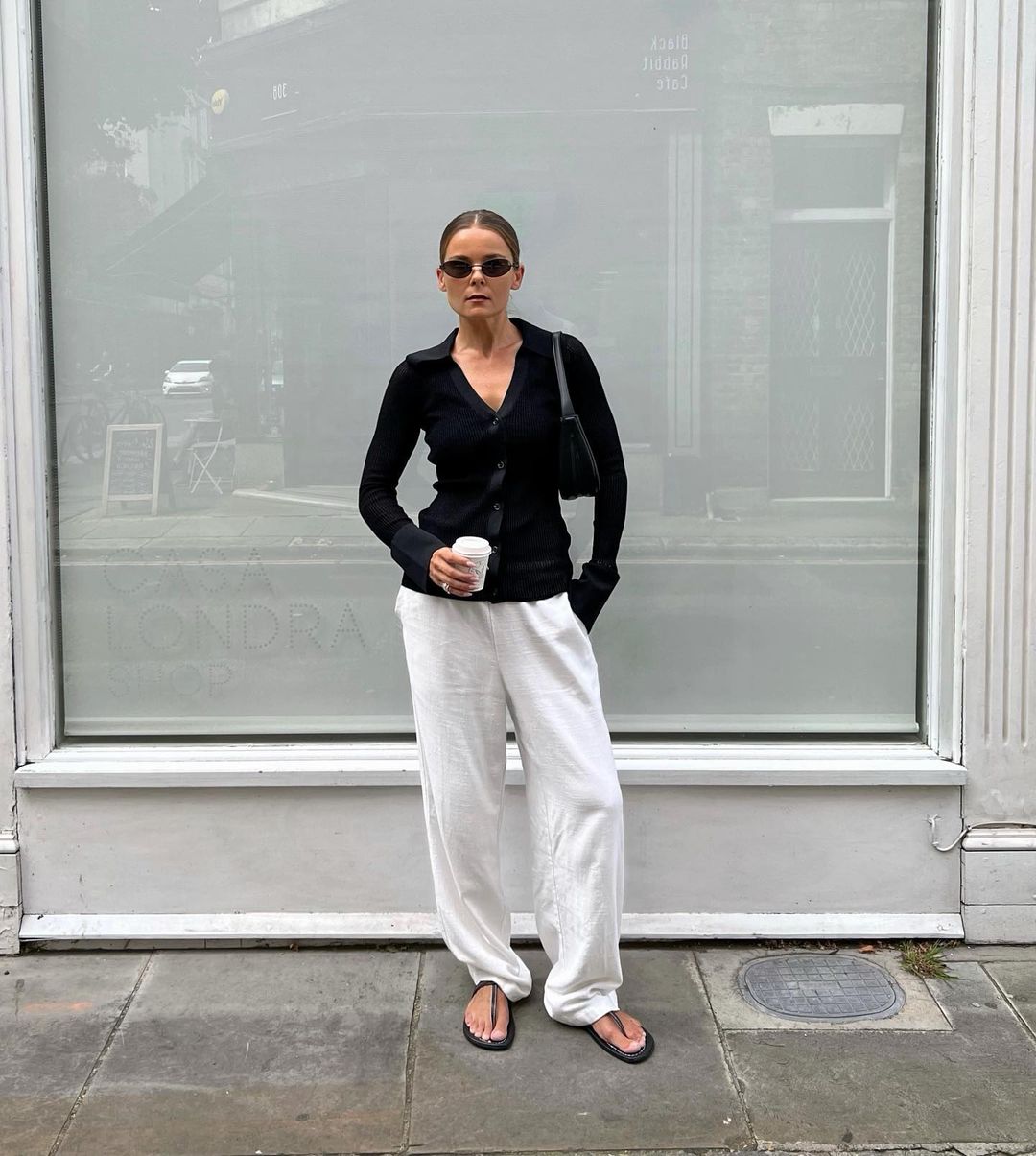
How can you tell high quality linen?
According to Lea Wieser, there are four key ways you can tell linen is high-quality.
1. Check the label for fibre content: look for items that are made of 100% linen, rather than blends with other materials. 100% linen is stronger and more durable and will become softer with time.
2. Check the thickness and weight of the linen: high-quality linen is typically heavier and ticker—a good quality linen fabric should feel substantial and have some weight to it.
3. Look for even and consistent weaving: great quality linen should have a tight and even weave, as this indicates that the fabric is of good quality, you can check this by holding the fabric up to the light and examining the weave.
4. Look for a soft and smooth texture: linen that's been well-made will have a soft and smooth texture. You can run your hand over the fabric to feel for any roughness or stiffness, which could indicate a lower-quality linen.
Is linen sustainable?
"Made from flax, linen is a natural, biodegradable fabric but also a zero-waste material as all by-products of the flax plant can be used," Wieser says. Growing linen uses much less water too. For example, a linen shirt uses 6.4 litres of water across its lifecycle compared, while a cotton shirt will require around 2,700 litres.
Celebrity news, beauty, fashion advice, and fascinating features, delivered straight to your inbox!

Lauren Cunningham is a freelance fashion and beauty editor covering runway reviews, fashion news, shopping galleries and deep-dive features.
